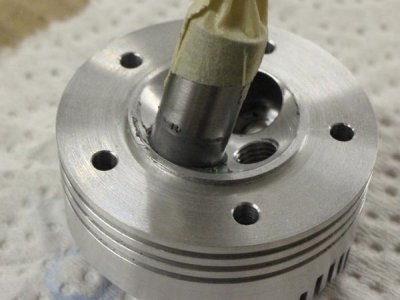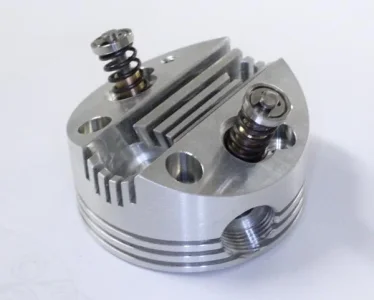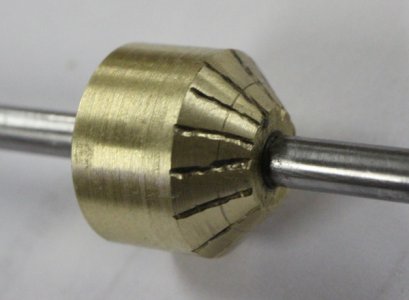Bronze Valve Cages. I won't bore you with the behind the scenes testing & details of how I eventually landed on this final configuration other than to say model valves & seats don't really 'scale' to a FS engine. The valve 45-deg face is ~.050" across but the seat in the cage is only ~ 0.010". The seat could actually be more, but its actually pretty difficult to machine & finish properly at this scale. When I took apart some commercial RC 4-S engines I was able to see the same thing, teeny thin valve seats.
A good method I came across from a successful builder is to insert a known good 'reference' valve into a newly machined cage & pull a vacuum from the top side. If the needle 'holds' meaning it slowly declines over some period like 30 secs, it is deemed good. Turns out this is more difficult than it sounds for many underlying reasons I had to figure out. Its rather humbling when the valve faces look perfect & the needle goes Fffft to zero in a short span. The tester valve has a flat ground on a portion of the stem so the vacuum isn't tricked by the close annular fit of the stem portion.
A good method I came across from a successful builder is to insert a known good 'reference' valve into a newly machined cage & pull a vacuum from the top side. If the needle 'holds' meaning it slowly declines over some period like 30 secs, it is deemed good. Turns out this is more difficult than it sounds for many underlying reasons I had to figure out. Its rather humbling when the valve faces look perfect & the needle goes Fffft to zero in a short span. The tester valve has a flat ground on a portion of the stem so the vacuum isn't tricked by the close annular fit of the stem portion.


































































